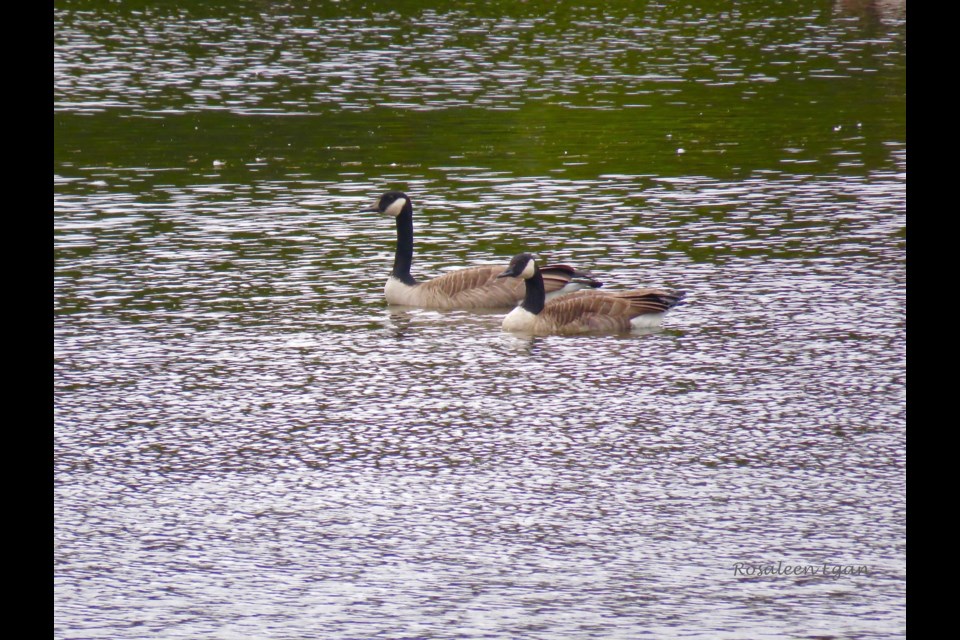The sound of Canada Geese has filled the air on the farm the last couple of weeks. It’s always neat to hear them coming and to determine how likely they are to fly right overhead. The sound of wings flapping and the energy movement when it does happen is a lovely feeling.
I realize not everyone is a fan of an abundance of geese, and with good reason. They can be aggressive, and they can eat for 12 hours a day. The digestion of all this food leaves a mess on lawns. Here they eat grain left in the fields after harvesting and are attracted by a small pond on a neighbouring property. They seem to suit this habitat more than city parks.
I had the pleasure one day this week watching about 100 of them circle in distinct groups, crossing over and under other groups as each found a way to approach the pond to land. It was as if it was choreographed. The soft descent of these large birds seemed a beautiful thing to me.
These groups may be families or loosely related. They may also not be migrating to the southern United States or Mexico as many of us think. According to allaboutbirds.org, “Geese breeding in the northernmost reaches of their range tend to migrate long distances to winter in the more southerly parts of the range, whereas geese breeding in southern Canada and the conterminous United States migrate shorter distances or not at all”.
Those migrating distances sometimes mix with those that overwinter, making it difficult for the rest of us to sort out who is going where. They gather in groups at food sources.
Those that do not migrate, or migrate short distances in Southern Ontario, find open water and agricultural land, such as there is here, to overwinter. Individuals return to the same wintering areas every year. Canada geese are monogamous. Females return to where they themselves were born to give birth, and the family breaks from the flock to raise their young.
In the spring and summer, these geese eat flowers, grasses and sedges. “During fall and winter, they rely more on berries and seeds, including agricultural grains, and seem especially fond of blueberries,” says allaboutbirds.org. They are unusual as water birds in that they mainly eat on land.
It surprised me to discover as I was writing this that there are as many as 11 subspecies of Canada Geese, broken into two groups - one of seven large species, and four of smaller species. “Small Canada Geese tend to nest farther north and migrate farther south, while larger Canada Geese nest farther south and usually do not migrate as far, if at all,” says birdsoftheworld.org.
It is the most widely distributed goose in North America and breeds from eastern Labrador to western Alaska and is the only North American goose that commonly breeds south of 49°N”, according to birdsoftheworld.org
Canada Geese fly in single or multiple lines or in “V” formation. Hinterland Who’s Who (hww.ca) says: “Scientists believe that Canada Geese fly in a 'V' because of the 'drafting' effect, where the follower goose, like a cyclist in a race, benefits from the air currents passing the leader, and thus expends less energy flying. A secondary function of the formation is to coordinate the flock’s movements, allowing changes in flight speed or direction to be communicated quickly and efficiently to all members of the flock.”
Seeing, and sometimes feeling the movement of their large wings as they fly in formation over the farm is a wonderful thing. They herald the change in season with their sound.
Rosaleen Egan is a freelance journalist, a storyteller, and a playwright. She blogs on her website rosiewrites.com
